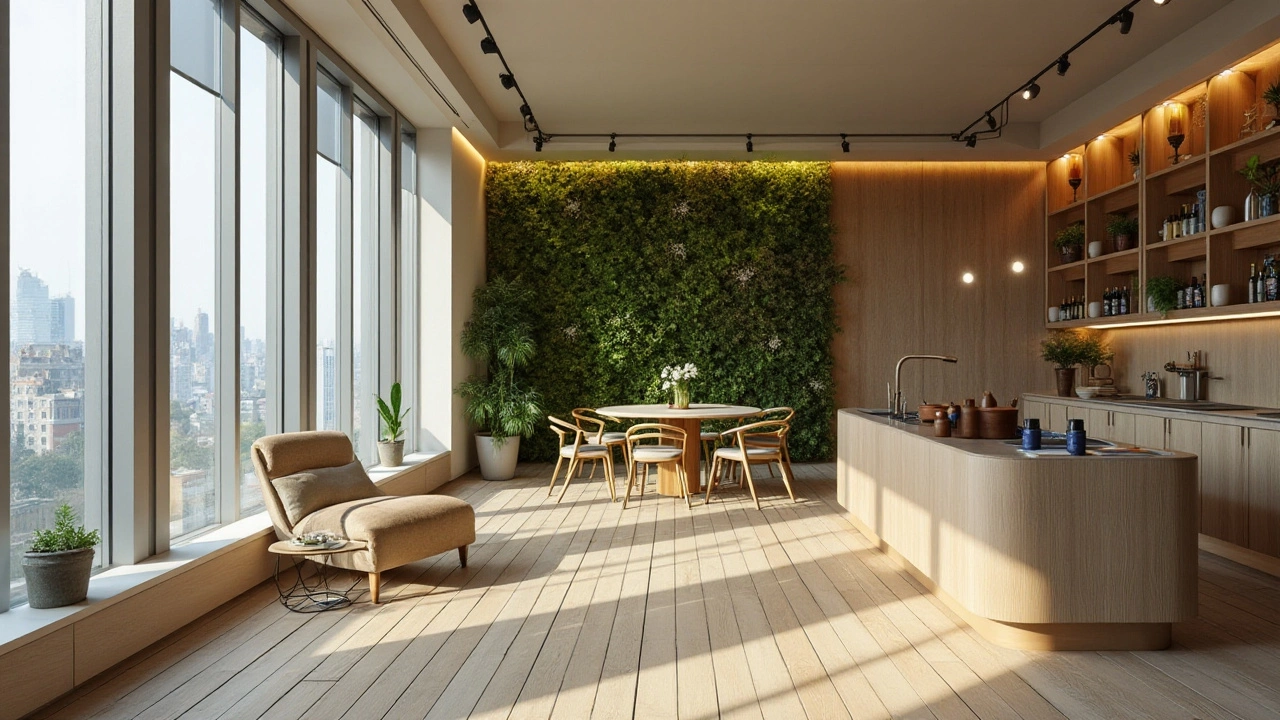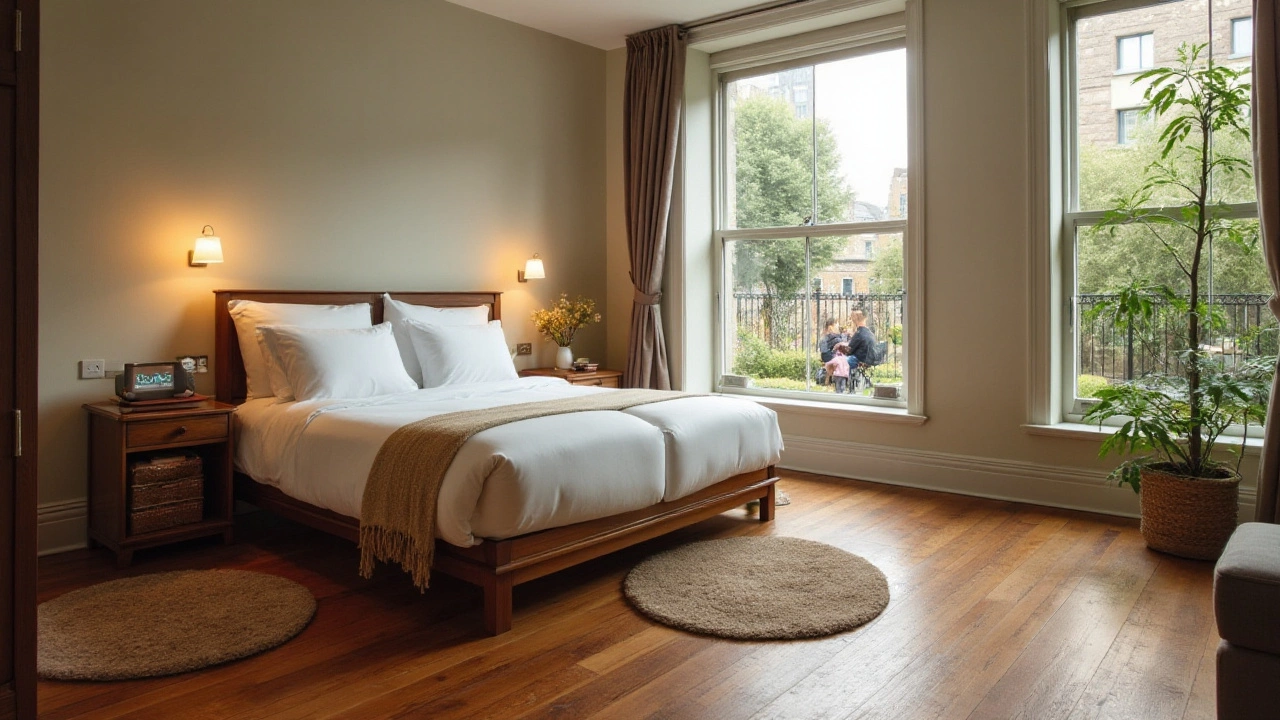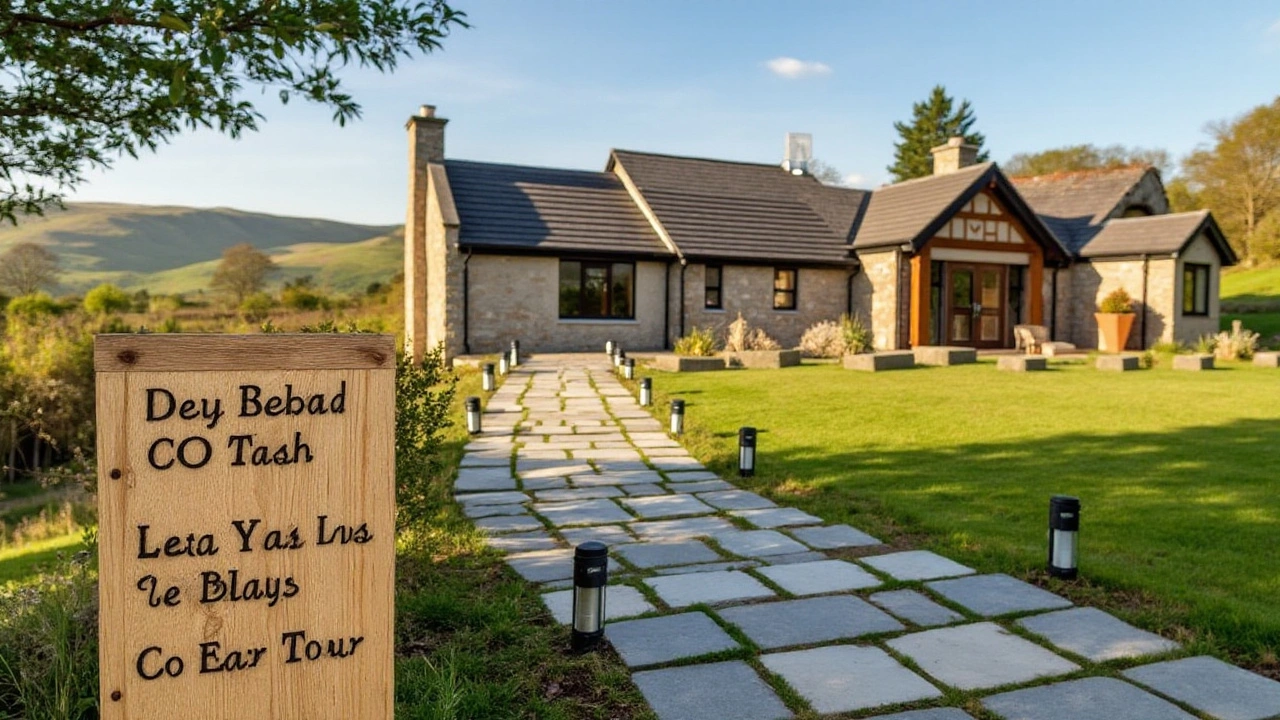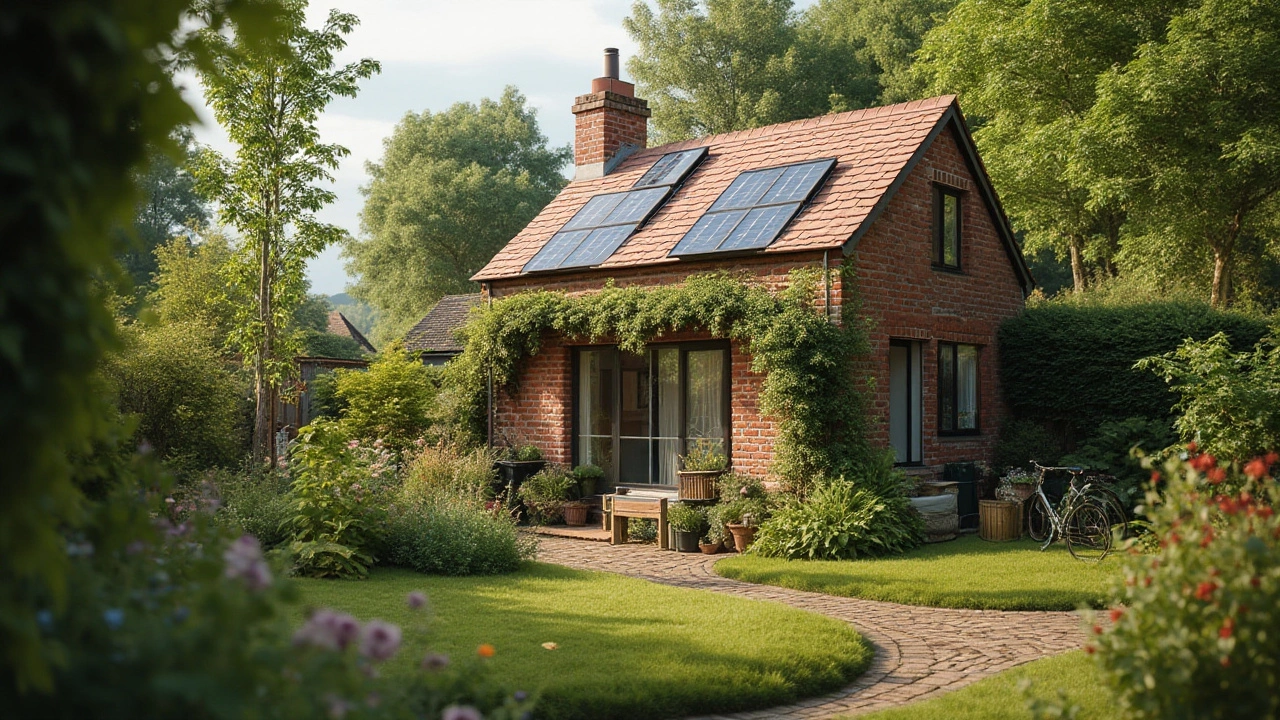Transform Your Airbnb into an Eco-Friendly Haven
12 Nov, 2024In today's world, where the planet is facing numerous environmental challenges, making your Airbnb eco-friendly isn't just a trend; it's a responsibility. Hosting a sustainable rental not only reduces environmental impact but also appeals to a growing number of eco-conscious travelers searching for accommodation that aligns with their values.
Creating an eco-friendly Airbnb may seem daunting at first, but with a few strategic changes, it can become a haven for guests who value sustainability. From choosing the right materials to integrating modern energy solutions, each step taken contributes to a greener planet.
Whether you're just starting your eco-friendly journey or looking to enhance your existing practices, there are countless ways to make a positive impact. Let's dive into some practical, yet impactful strategies to transform your Airbnb into an inspiring example of sustainable hosting.
- Green Building Materials and Furnishings
- Energy Efficiency and Renewable Sources
- Sustainable Water Practices
- Encouraging Eco-Friendly Guest Practices
Green Building Materials and Furnishings
Transitioning your eco-friendly Airbnb into a space that champions sustainability starts with the very bones of your property. By integrating green building materials, the structure itself can reflect an environmental ethos. Opting for sustainable materials like bamboo or reclaimed wood can vastly decrease a property's carbon footprint. Bamboo, for instance, grows incredibly fast compared to traditional hardwoods, and using it impacts natural forests less severely. Reclaimed wood offers a rustic charm and often comes with a history, making it a conversation starter while being a friend to the planet.
Recycled concrete or steel are other innovative choices for structural or decorative elements. These materials not only use less new resource but often require less energy to produce. When considering furnishings, look for items made from organic cotton, hemp, or linens, as these fabrics are produced with minimal pesticide use. Moreover, pieces crafted from recycled materials provide unique style while promoting the value of reuse over re-consumption. Locally-sourced items support regional economies and often require less transportation, cutting down emissions significantly.
To create a genuine haven for eco-conscious travelers, it's crucial to consider not only what your Airbnb is built from, but what fills it. Incorporating furniture that doesn't merely serve a function but tells a story of sustainability can transform a property. Brands focusing on cradle-to-cradle design ensure that the life cycle of their products continues past initial use without environmental detriment. In line with this approach, the use of low-VOC paints can contribute significantly to indoor air quality, proving beneficial for both the environment and guests.
Incorporating sustainable design isn't solely about practicality; it's equally about aesthetics and the sentiment a space communicates. Installing energy-efficient insulation made from recycled materials, or opting for double glazed windows, can immensely influence a structure's energy efficiency. As a telling example, a report by the National Renewable Energy Laboratory illustrates the drastic reduction in heating and cooling costs resulting from efficient window installations. Small touches like choosing eco-friendly flooring alternatives such as cork or linoleum can also elevate the eco-statements within your rental.
"Sustainable design is not a constraint – it's an opportunity." – Michael Braungart, author and sustainability advocate.
Finally, thoughtful consideration towards decorations and accessories can cap off your commitment to green hosting. Art pieces crafted from recycled elements or displaying the work of artists who prioritize environmental themes offers guests novel ways to engage with and appreciate your property. Making guests aware of your choices through concise notes or visual storytelling can enhance their appreciation and inspire them to consider the impact of their consumption as well. Ultimately, each decision you make in furnishing your rental can turn it into a shining example of what sustainable living can offer while attracting green hosting enthusiasts.

Energy Efficiency and Renewable Sources
When it comes to making your Airbnb eco-friendly, focusing on energy efficiency and renewable sources is a pivotal step. Implementing energy-efficient solutions not only reduces the carbon footprint of your property but also leads to substantial cost savings over time. Guests today are more educated and passionate about the environment, often preferring accommodations that prioritize sustainability. One of the easiest ways to start is by upgrading lighting to LED bulbs, which consume significantly less electricity and have a longer lifespan than traditional incandescent bulbs. This simple change can lead to a noticeable reduction in energy consumption.
Insulation plays a crucial role in maintaining temperature control within your Airbnb. Proper insulation ensures that heating and cooling systems operate more efficiently, thus requiring less energy to maintain comfort for your guests. Sealing gaps around windows and doors can prevent energy loss and contribute to a more sustainable living space. Smart thermostats are another excellent addition, enabling you to manage energy usage even when the property is unoccupied. They can be programmed to adjust temperatures based on occupancy patterns or user settings, which further enhances energy conservation.
Turning our focus toward renewable energy, incorporating solar panels is a popular choice among eco-friendly hosts. Solar energy is abundant and a great way to lessen reliance on non-renewable energy sources. While initial installation costs can be high, solar panels often pay for themselves through reduced energy bills. In support of this, the International Renewable Energy Agency found that solar energy installations have been consistently decreasing in cost by up to 90% over the last decade, making it more accessible than ever before.
A recent study conducted by the National Renewable Energy Laboratory highlights that "integrating renewable energy sources can lead to substantial energy savings, potentially reducing annual energy bills by 30% or more."
It's not just about big installations; every small change counts. Encouraging the use of energy-efficient appliances is a significant step. From dishwashers to refrigerators, selecting items with ENERGY STAR ratings can dramatically lower energy consumption. Finally, encouraging guests to be mindful of their own energy usage can go a long way. Simple reminders like switching off lights when leaving a room or unplugging electronics when not in use can further enhance your Airbnb's eco-friendly profile.
As more people become conscious of their carbon footprint, making your Airbnb a beacon of sustainability is not only wise but also a draw for potential guests. You're not just offering a place to stay, you're providing an experience that aligns with the values of environmentally aware travelers.

Sustainable Water Practices
Adopting sustainable water practices in your eco-friendly Airbnb can significantly reduce your environmental footprint. It begins with understanding how water is consumed within your property, from showers and toilets to gardens and washing machines. A straightforward approach involves installing low-flow showerheads and faucet aerators, which can cut water use by more than half without compromising on comfort. These devices are easy to install and are one of the most effective ways to conserve water.
Another essential step is to consider toilets that use less water, such as dual-flush systems. Traditional toilets can use up to 3 gallons per flush, while modern low-flow toilets use as little as 1.28 gallons. This simple change can dramatically decrease water bills. Additionally, incorporating rainwater harvesting systems can further reduce reliance on local water supplies. By collecting rainwater for garden irrigation, you're not only saving water but also making use of a natural resource.
Landscaping decisions can also make a big difference. Consider using native, drought-resistant plants that require little to no additional watering beyond rainfall. This approach, known as xeriscaping, can lead to lush, beautiful gardens that are both eco-friendly and cost-effective. You can set up drip irrigation systems to provide moisture efficiently and reduce water waste. Timers and sensors can optimize watering schedules, ensuring plants get water only when needed.
"Our duty, as eco-friendly hosts, is to inspire others by showing sustainable water practices in action," says Christine Beyer, an environmental scientist.
For laundry and kitchen areas, opting for appliances designed to be water-efficient makes a significant impact. High-efficiency washing machines use roughly 25% less water and 30% less energy than regular models. When replacing or purchasing new dishwashers, look for Energy Star labels which guarantee water and energy efficiency. Encouraging guests to follow suit can reinforce sustainable habits. Provide clear instructions on water-saving practices and post signs reminding them of the importance of conserving this precious resource.
Finally, investing in water-efficient technology is only part of the solution. Educating guests about the importance of water conservation is essential in transforming an eco-friendly Airbnb into a model of sustainability. Including educational materials or digital guides about the local water ecosystem can enhance guests' understanding of your efforts. Engaging visitors in these practices not only enriches their experience but also promotes awareness about sustainable living beyond their stay.

Encouraging Eco-Friendly Guest Practices
Helping guests embrace sustainable habits during their stay is a key component of maintaining an eco-friendly Airbnb. With the right combination of clear communication and clever incentives, you can guide your visitors toward making environmentally conscious choices without sacrificing comfort or convenience. Information is power—begin by providing guests with educational materials highlighting the eco-friendly features of your property and practical tips on how they can contribute to reducing their carbon footprint during their stay. This could include simple suggestions like turning off lights and electronics when not in use, being mindful of water consumption, and how to separate recyclables from waste correctly.
One effective way to encourage environmentally friendly habits is by offering incentives to those who actively participate. Consider small rewards or gestures, like a complimentary gift basket filled with local organic goodies or a discount on their next visit for guests who adhere to sustainable practices. Reinforcing these behaviors positively nudges guests in the right direction and creates a memorable experience they might share with others, potentially guiding future bookings of eco-conscious travelers. According to a 2022 study by Booking.com, 83% of global travelers believe sustainable travel is vital, with 69% saying they expect to see more sustainable travel options where they book. These numbers point to the growing importance of sustainability in travel, and as a host, sharing this on booking sites as a unique value proposition can attract new audiences eager to be part of the change.
Establishing a comprehensive recycling and composting program is another way to involve guests in eco-friendly practices. Provide clearly labeled bins in accessible locations throughout the dwelling and offer easy-to-follow instructions to facilitate correct usage. It's worth considering adding a small compost bin for kitchen scraps if local facilities allow for organic waste processing. By making these processes straightforward and accessible, guests are more likely to engage and support the green initiatives in place. Encouraging guests to shop locally also contributes to sustainability. Suggest farmers markets, eco-friendly stores, and local attractions that support the environment. Offering a guidebook or information app featuring maps and addresses of such places ensures guests are aware of these options and feel more connected to the community they are visiting.
Communication doesn't end with a checklist of do's and don'ts—engage with guests on a personal level, discussing the larger impact these practices have and why they matter. Opening up a dialogue allows for potential feedback and ideas that could further enhance the sustainability efforts within your Airbnb. Interacting with guests about environmental concerns shows thought leadership as a host and can lead to lasting connections, heightened guest satisfaction, and positive reviews. Highlight glowing guest feedback about your eco-friendly practices in your Airbnb profile; word of mouth remains a potent marketing tool and helps establish your property as a leader in green hosting.

 by
by